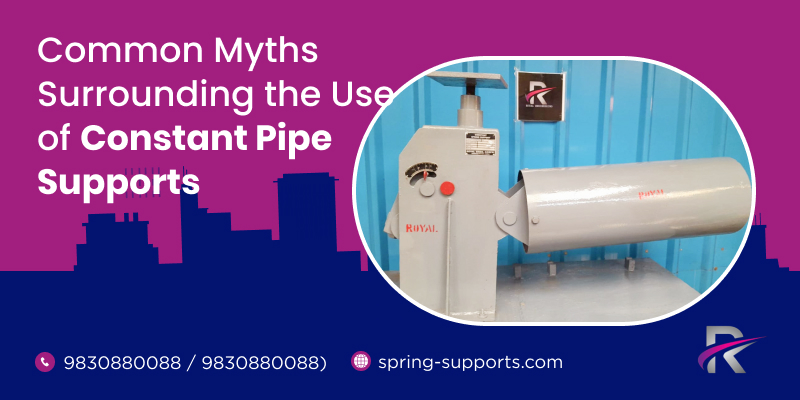Decoding Myths Surrounding the Use of Constant Pipe Supports

The piping system is a complicated area, hence when it comes to choosing a type of pipe support it becomes important for a person to be knowledgeable. However, many times due to wrong information the right decision is not made. For instance, there are a lot of myths about constant pipe support. If you want to make an error-free decision, then that is exactly where you need to be! In this blog, top experts have busted some of the myths and shared the truths behind these myths.
Myth 1: Every Pipe Support Is Made Equally
Many people have little knowledge about the functionalities of pipe supports, and this is what leads them to believe that all pipe supports function similarly. However, that is not at all the case, the truth is way different than the common belief. Generally, when it comes to handling variable load spring supports are reliable, on the other hand, the constant pipe supports are engineered to pacify the vertical movement that is triggered by thermal changes. Recognising the difference is essential in order to choose the appropriate support according to the distinct needs of a pipe system.
Myth 2: Spring Support Are Always the Best Choice
There is another myth that says using spring support for pipes is always better. Although spring supports are excellent at handling dynamic loads, they might not be the best option in situations where continuous vertical support is needed. Constant pipe supports work better when there is regular thermal movement because they provide a firm and steady base that keeps the system from under stress.
Myth 3: Constant Pipe Supports Are Only Good to Solve Thermal Expansion
No, it is not true that constant pipe supports are designed exclusively to fix the issue triggered by thermal expansion. Although there is no doubt that this type of constant pipe support is best for this issue, it has more uses which are similarly important. A brief insight will give a proper picture of its effectiveness; it helps to maintain the accurate alignment and overall integrity of the piping system.
Myth 4: Continuous Pipe Supports Are Excessively Expensive and Complicated
Some people think it’s difficult and costly to add continuous pipe supports to a piping system. These supports are actually designed to be as simple and effective as possible. Their layout lessens the need for ongoing modifications, which lowers the cost of long-term maintenance. The advantages in terms of system longevity and dependability greatly exceed the alleged complexity and costs, even though there might be an initial investment.
Myth 5: Only Large Systems Require Constant Pipe Supports
According to this myth, continuous pipe supports are only necessary for large-scale piping systems. In actuality, these supports are beneficial to systems of all sizes. The ideas of preventing heat movement and preserving stability apply equally in big industrial facilities and small-scale commercial settings. The longevity and ideal operation of the whole piping network are guaranteed by the proper integration of constant pipe supports.
Conclusion:
In conclusion, ensuring the dependability and longevity of pipe systems requires an understanding of the function of constant pipe supports and the debunking of common misconceptions about their use. Pipe supports are essential for resisting thermal movement and offering firm, unwavering support, even though spring supports have a role in controlling dynamic loads. The overall effectiveness and performance of a piping system depend on selecting the appropriate support based on its unique requirements.


